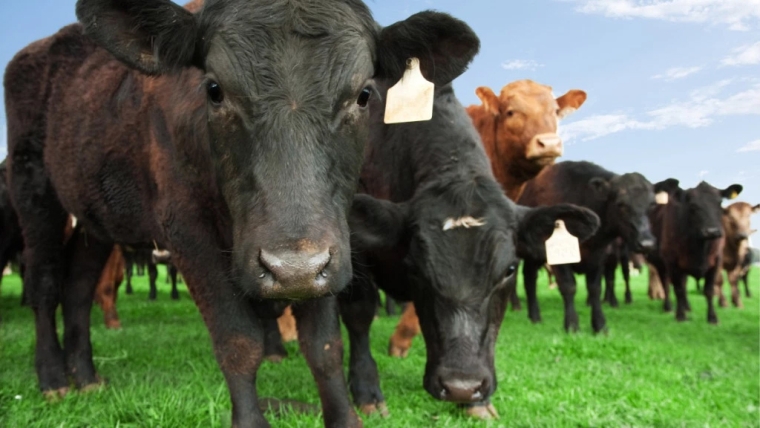
By Guy Trafford

Recently, a Hawkes Bay business man has been reported as taking his local regional council to the Environment Court over what he believes is failure to regulate feedlots and protect water ways.
At particular issue is a block of land where the cattle are moved within the 15 day guideline in any 30 day period which defines a feedlot from a piece of intensively farmed pasture land and therefore does not have to comply to Hawkes Bay Regional Resource Management Plan (RRMP) rules.
At first glance it could appear that the farmer is successfully using a loophole in the regulations to his advantage even if he is abusing the intent. This is not the first to the very same issue has been raised before the Hawkes Bay Regional Council. In February last year RNZ highlighted that this had been an issue the previous (2016) winter. As a response to this the HBRC had held a meeting with about 50 feedlot operators and farmers tp provide guidance around the rules and presumably put a line in the sand. Eighteen months later it appears nothing has changed.
One of the problems appears to be the ambiguous wording of the guidelines where the 15 day minimum is the only objective measure. Other criteria are at best vague. I.e. “Strip grazing could be included under this definition if not managed appropriately”. Presumably this is if in the same block for 15 days? Or maybe not.
Given that HBRC have been under notice for the best part of two years the Environment Court are not likely to be sympathetic.
The question then comes back to what about the farmer(s) carrying out the practise. Can the HBRC find a way to hold them to account?
Whether, Rule 49e which states "there shall be no surface ponding in the area of discharge, or runoff of any contaminant into a surface water body as a result of the discharge”, can be applied pre the 15 day minimum may be a job for the courts also.
Minnesota State in the US have a similar set of regulations aimed at preventing water pollution from intensive grazing/feedlot systems. However, their rules are less ambiguous with the clause; “If your current or future operation consists solely of pastures, you are exempt from the Feedlot Rules (Minnesota Rules, Chapter 7020).” Followed by, “However, pastures must operate in a manner that does not result in water pollution, and State water quality standards (Minnesota Rules, Chapter 7050) still apply. Local ordinances may impose additional restrictions.”
If these rules were imposed upon farming systems in New Zealand, not just Hawkes Bay I would suggest many operators would be having to review their wintering systems.
Canterbury, Otago and Southland have numerous examples of, mostly, dairy cows, although bull beef systems are in a close second crammed onto ‘blocks’, which in no way could be classed as pasture standing up to their hocks in mud being stripped grazed onto fodder beet and kale crops with additional rations of straw and baleage supplied. New Zealand has often seen the US as having lax laws around water pollution but in Minnesota at least they appear to be considerably ahead.
One of the more frustrating aspects of the lack of any rigorous and definitive rules which protect the environment is that it allows the ignorant to drag down the whole industry.
The scene around what is and isn’t acceptable is changing rapidly and many farmers struggle to adapt their thinking fast enough to stay abreast of where the ‘social licence to farm’ is taking them especially when some of the changes can mean quite large impacts upon the farm system’s economic basis.
However, if producers truly believe that the way forward is to produce ethical and sustainable food and therefore gain an advantage over competitor countries they need to take it seriously and not just pay lip service to it, if that. I suspect that for a number of reasons we will look back in ten years time and say, “what were we thinking?”
The current practices are just providing easy pickings for those who equate these poor ‘intensive’ practices as good reason to protest against the setting up of future farming systems that require irrigation schemes and given the lack of respect for the water ways who can really blame them.
Given the future environmental challenges ahead, farmers will need all the friends they can find not more enemies.
P2 Steer
Select chart tabs
2 Comments
Southland Regional Council defines Feedpads/Lots and intensive winter grazing separately:
A feed pad/lot is a fenced in or enclosed area that is used for feeding or loafing cattle or deer
and all the feed is brought to the animals. The aim of these facilities is to avoid damage
to pasture when soils are saturated, and can be located indoors or outdoors. It includes
‘sacrifice paddocks’, wintering pads, stand-off pads, calving pads, loafing pads, and self-feed
silage storage facilities.
https://www.es.govt.nz/Document%20Library/Factsheets/Consent%20advice/0…
Intensive winter grazing: Grazing of stock on forage crops between May and September (inclusive).
https://www.es.govt.nz/Document%20Library/Factsheets/Consent%20advice/0…
More research and information needed on sustainable ways to manage feedlot/pads. They an be beneficial, if a closed loop system . I'e nutrients / gases captured.

We welcome your comments below. If you are not already registered, please register to comment.
Remember we welcome robust, respectful and insightful debate. We don't welcome abusive or defamatory comments and will de-register those repeatedly making such comments. Our current comment policy is here.